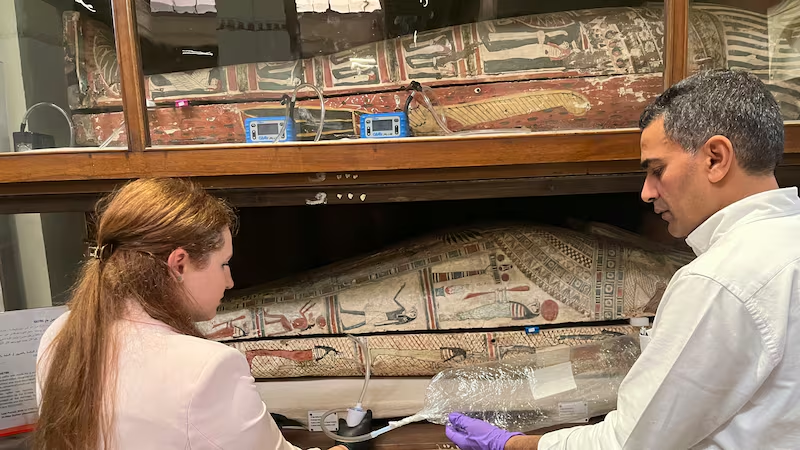A recent study has revealed that ancient Egyptian mummified bodies emitted a distinct odor described as “woody, spicy and sweet.” This marks the first systematic exploration of the odor of mummified remains.
The research, led by scientists from University College London and the University of Ljubljana, used both instrumental and sensory techniques, including an electronic ‘nose’ and trained human assessors, to uncover new insights into mummification materials and practices.
The study provides valuable insight into how mummification materials have evolved over time and how they could help preserve ancient artefacts and olfactory legacies.
“The odor of mummified bodies has intrigued researchers and the public for years, but until now a combined chemical and sensory analysis has not been performed,” said lead author Professor Matija Strlič.
“This pioneering work not only advances our understanding of ancient embalming materials, but also aids conservation efforts and adds depth to museum exhibits.”
The researchers analysed the chemical composition of emissions from nine mummified bodies on display at the Egyptian Museum in Cairo using gas chromatography and mass spectrometry. A panel of trained human ‘sniffers’ assessed the intensity, quality and pleasantness of the odours.
By integrating these techniques, the team was able to distinguish between odours resulting from original embalming materials, preservation processes or natural deterioration caused by mould, bacteria and other microorganisms.
The study has proven the effectiveness of odour analysis as a non-invasive method for studying ancient remains.
“Two aspects of this research are particularly striking. First, it shows how our sense of smell can reveal new historical insights. Second, by collaborating with Egyptologists, we ensured that local knowledge and ethical considerations were at the heart of our approach,” said Dr Cecilia Bembibre, from University College London.
“Mummification was a vital practice for ancient Egyptians, aiming to preserve the body and soul for the afterlife through a meticulous ritual involving oils, waxes and balms,” explained Professor Ali Abdelhalim, director of the Egyptian Museum in Cairo.
“The techniques and materials used varied according to the period, location and socioeconomic status of the deceased. Identifying these differences provides deeper insights into ancient Egyptian society.”
The study reinforces the importance of smell in the mummification process, as pleasant smells were associated with divine purity, while foul odours symbolised decay and decay.


